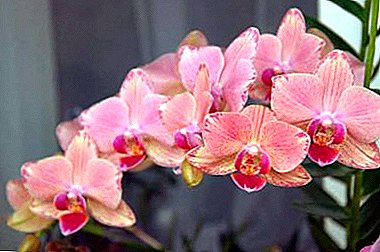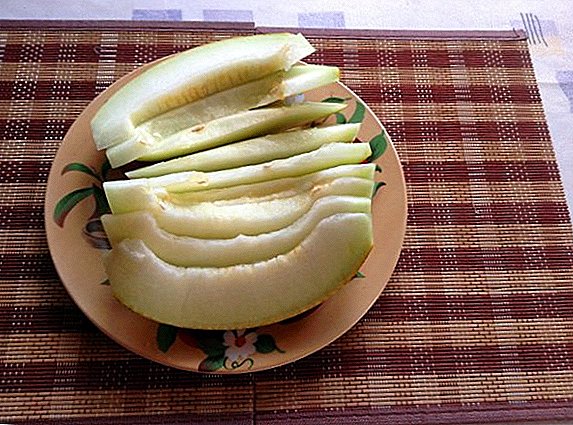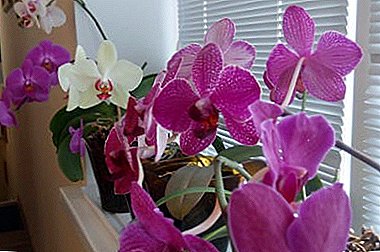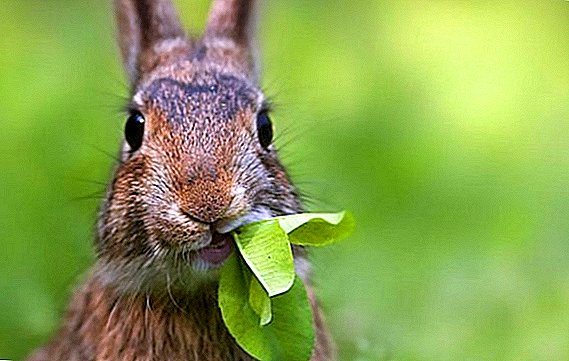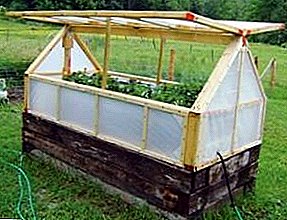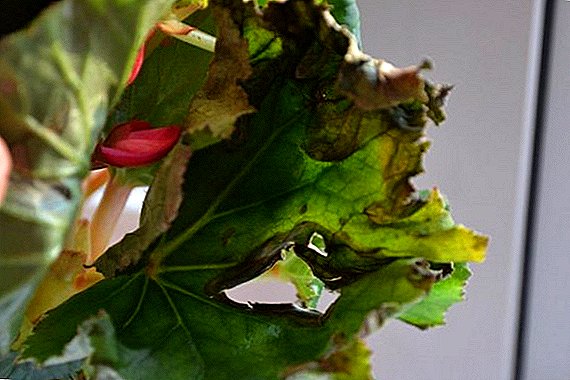 Modern varieties of begonias delight their owners not only with long and luxurious flowering, but also with the beauty of their juicy leaves. The article will look at what to do if the foliage of the begonia began to dry and lose its decorative appearance, what causes this phenomenon can cause, how to deal with it, as well as preventive measures.
Modern varieties of begonias delight their owners not only with long and luxurious flowering, but also with the beauty of their juicy leaves. The article will look at what to do if the foliage of the begonia began to dry and lose its decorative appearance, what causes this phenomenon can cause, how to deal with it, as well as preventive measures.
Basic rules for growing begonia and caring for it
Caring for begonias is uncomplicated, and they feel good in the indoor environment. When keeping them, the following rules should be followed:
- Avoid direct sunlight. - this indoor flower prefers diffused light. Well fit window openings east or west.
- Maintain optimum moisture - Begonias do not like dry air. At the same time it is not recommended to do spraying, as droplets lingering on a piece of paper can leave spots on it.
- Water as it dries. top layer 1-1.5 cm, to avoid strong drying of the soil in the pot or its excessive moisture.
- Maintain stable temperature conditions within + 15 ... + 23 ° С. In winter, temperatures should be lower - + 15 ... + 18 ° С.
- Use as a substrate loose soil mixtures and be sure to do drainage layer.
- The features of the biological cycle of the cultivated variety should be taken into account. Tuberous begonias in winter need to organize a period of rest.
- During the active growing season the plant must be stably fed. For planting you need to take loose nutrient mixtures based on peat and leafy ground.

Why do begonias have dry leaves at the edges and how to save the plant?
The factors that cause the drying of the beauty of the begonia leaves may be different. Usually they lie in the mistakes of caring for her, defeat by pests or disease.
Did you know? Begonia reduces the amount of staphylococcus in the air to 80%. It is useful to start where people live with respiratory diseases.
Sharp change of environment
Begonias do not like a sharp change in growing conditions. If in the summer you decide to decorate your balcony or a summer terrace with this flower and take it out to the garden, then the temperature change should not be striking. It should also be avoided too thick shade or direct sunlight.  Find a place with optimal conditions for this plant or create them. If there is no need, it is better not to rearrange the flower once again. When airing in the winter season, you need to make sure that the air flow from the vents does not fall on the begonia.
Find a place with optimal conditions for this plant or create them. If there is no need, it is better not to rearrange the flower once again. When airing in the winter season, you need to make sure that the air flow from the vents does not fall on the begonia.
Dry air
With a strong dryness of the external environment, which often happens during the summer heat or when the heating is turned on, the leaves dry and lose their decorative effect. During these periods, it is necessary to exercise vigilance and prevent air and soil from drying out.
Important! The optimal acidity for begonias is 5.5-6.5 pH. With strong deviations from this norm, the plant begins to poorly absorb food from such land.
For the necessary air humidification, you can put a plant pot in a bowl with wet decorative pebbles, put a container with water or a room fountain next to it. The optimal humidity for begonias should be at 75% and not fall below 60%.
Lack of trace elements
If there are no signs of diseases and pests, all the conditions of care and cultivation are met, and the leaves continue to dry, then the reason for this is a lack of nutrients. Perhaps the plant was planted in poor land or it was not fed.
When the begonia is actively growing or going to bloom, then every 2 weeks you need to make feeding:
- Decorative flowering varieties - they are suitable fertilizer for flowering plants containing potassium and phosphorus, for example, such as "Bud", "Pollen".
- Deciduous species - they are preferred nitrogen and fertilizer "Kemira" or "Agricola".

If there was no purchased fertilizer for begonias at hand, you can use the following home remedies for fertilizing:
- Yeast solution. Dissolve dry yeast (1 g / 1 l) in slightly heated water. This means you can feed the plants 5 times a year.
- Banana peel. Her first thing is to dry and grind in a coffee grinder, then scatter the resulting powder on the soil surface in a pot. Then you should pour begonia well. Such a banana powder can be used once a month. In addition, it is stored for a long time, it is permissible to make it into the soil during planting.
- Ash solution. Mix ashes in water (3 tbsp./1 l) and infuse the solution for a week.
Solid ground
Poor permeability of the earth in the tank reflects badly on the state of begonia. This situation causes stagnation of water, which leads to rotting of the roots and lethargy of the aerial parts of the plant. The flower should be transplanted into a more suitable soil or add coarse sand, vermiculite, perlite, coconut fiber to the soil used.
Did you know? The name of the flower in question is one of the asteroids of the Main asteroid belt, discovered in October 1920 by an astronomer from Germany C. Reinmuth. He was given the number 943 and the name Begonia.
Pests
Upon careful inspection of the begonia, which has dried leaves, it is possible that the following pests will be found on it:
- Aphid. This small (up to 2.5 mm) greenish insect sucks the sap from the plant, causing yellowing and drying of the affected areas, provoking viral diseases. It is necessary to apply the preparations "Fufanon" or "Aktellik", use a soap solution (25 g / 1 l).

- Mug is soft. It is also sucking the juice of small insects (3-4 mm), which can cause a black residue. They are removed mechanically by brushing with a soft bristle brush. Then carry out the processing of garlic extract or pyrethrum (chamomile). These infusions are made at the rate of 10 g / 1 l.
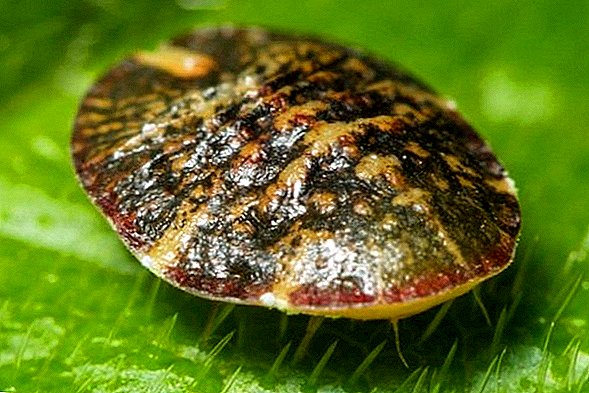
- Whitefly is greenhouse. Small insect with whitish wings and a length of only 1.5 mm. At home, it is better to use a soap solution (4 g / 10 l).

Diseases
Drying leaves of room begonia often occurs against the background of the appearance of certain diseases. Consider the main ones.
Learn more about the diseases and pests of begonias.
Mealy dew
When such a disease appears on the plant, white powdery powder is detected first. Over time, the affected leaves dry and fall away. With such signs, you must immediately apply the fungicidal preparations "Fundazol" or "Maristan".  The affected parts of the plant should be removed, in order to prevent it, you can spray the begonia with a solution of copper sulphate, in which you can add soap for better adhesion. The proportions for the preparation of the solution are as follows - 2 g of copper sulphate and 20 g of laundry soap per 1 liter of water.
The affected parts of the plant should be removed, in order to prevent it, you can spray the begonia with a solution of copper sulphate, in which you can add soap for better adhesion. The proportions for the preparation of the solution are as follows - 2 g of copper sulphate and 20 g of laundry soap per 1 liter of water.
Gray rot
Damage is signaled by wet gray spots on the leaves, which eventually turn brownish and begin to rot. Then the process of rotting goes to the stems. In this case, you can also use a solution of copper sulfate and soap. With a strong development of the disease it is better to use the fungicidal preparations "Fundazol" or "Topsin-M". Diseased areas of the plant should be removed. 
Bacterial infections
Of these diseases, begonia most often suffers from bacterial blotch. The disease can be noticed by the appearance of glassy spots in the lower deciduous part of the plant. The leaves gradually become brown in color, and then turn black and fall off.  When these signs appear, the affected areas should be removed first. Next, the flower must be treated with a solution of 0.5% oxychloride copper at least 2 times with an interval of 2 weeks. It is also necessary to disinfect the soil in the pot.
When these signs appear, the affected areas should be removed first. Next, the flower must be treated with a solution of 0.5% oxychloride copper at least 2 times with an interval of 2 weeks. It is also necessary to disinfect the soil in the pot.
Preventive measures
To avoid the appearance of diseases that cause leaves to dry at the edges, the following preventive measures should be taken:
- be sure to choose the right soil and disinfect it before planting or transplanting a plant;
- avoid stagnation of water and overflow, avoid drying out the soil;
- periodically loosen the soil in a pot;
- do not forget to make fertilizer - they are well strengthen the plant;
- be sure to remove damaged parts and cut points sprinkle with powdered activated carbon;
- provide an acceptable level of moisture and temperature;
- do not use too much capacity;
- when transferring to a larger pot, use the transfer method (with an earthy clod) and try as much as possible not to damage the roots;
- to strengthen plants to use drugs like "Epin" or "Zircon";
- for the prevention of fungal diseases, treatment with Fitosporin-M or Immunocytophyte can be carried out;
- pots with flowers on should stand close to each other;
- It is important to regularly inspect plants for diseases and pests;
- a container with a flower affected by a disease or a pest should be immediately quarantined.
Important! The ever flowering begonia is a poisonous plant that should be placed outside the reach of children and animals.
Useful care tips
To avoid many troubles, it is important to take proper care of the begonia. Despite the simplicity of the plant, you should follow these recommendations from florist for the care of him:
- When planting, place the flower tubers shallowly. Apical buds should be visible above the soil level. It is necessary to pour the soil as it grows and develops. In summertime, it is necessary to create moderate shading or rearrange begonia to the north windows.
- In winter it is recommended to increase the humidity and fresh air. do the airing but at the same time ensure that the flow of frosty air does not fall on the flowers.
- Watering begonia should be regular, under the root, using water at room temperature, separated. Moisture on the leaflets can cause brown spots.
- For cleansing the leaves of begonias is better to use a soft brush. If you had to resort to water procedures, then the plant should dry out in a warm place without drafts or direct rays of the sun.
- Periodically should inspect the plant for the presence of pests and diseases. It is important not to forget while looking under the bottom sheets.
- If all the leaves immediately dry and there is no apparent reason for this, then transplant and inspect the roots. Perhaps the plant can be saved.
 Caring for begonia does not cause difficulties, but there is a list of conditions that must always be adhered to - for this plant you will thank for its decorative appearance. If the leaves of this indoor flower began to dry, then it is necessary to analyze the growing conditions, soil composition and fertilizing, carefully examine the plant for the presence of diseases or pests.
Caring for begonia does not cause difficulties, but there is a list of conditions that must always be adhered to - for this plant you will thank for its decorative appearance. If the leaves of this indoor flower began to dry, then it is necessary to analyze the growing conditions, soil composition and fertilizing, carefully examine the plant for the presence of diseases or pests.





